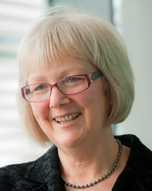Overcoming the barriers: the challenges of implementing OR models in health

Abstract
The academic literature on healthcare modelling is vast, and is growing at an astonishing rate. However, a succession of survey and review papers on this topic all report a depressing lack of implementation. It is clear that OR is not used as routinely in healthcare as in other industries. The picture is one of countless “consultancy” projects carried out by individual academics, published in academic journals, occasionally implemented locally by an enthusiastic partner organization, but not widely taken up and adopted elsewhere by other health providers. These myriad fragmented studies have led to a massive amount of wheel-reinventing. This talk describes an innovative and practical attempt to overcome this problem.
Biography
Sally is Professor of Management Science at the University of Southampton and is currently Associate Dean for Research in the Faculty of Business and Law. She obtained a BSc in Mathematics from Kings College London, and then worked for several years as a nurse in the NHS before obtaining an MSc and then a PhD in Operational Research from Southampton. Her research is in the area of healthcare simulation modelling: to evaluate treatments and screening programmes, or to redesign and improve service delivery. Sally has worked for over 20 years in many different disease fields including diabetes, cancer, mental health and HIV/AIDS, in addition to emergency care and end-of-life care. She is a Vice-President of EURO, the Association of European OR Societies, and chair of the EURO Working Group on OR Applied to Health Services (ORAHS). She is one of the Editors-in-Chief of the UK OR Society’s new journal Health Systems and is on the editorial boards of Health Care Management Science, the Journal of Simulation and Operations Research for Health Care. She has twice won the UK OR Society's Goodeve Medal, in 2004 for modelling emergency healthcare services in Nottingham, and in 2006 for modelling chlamydia infection.
